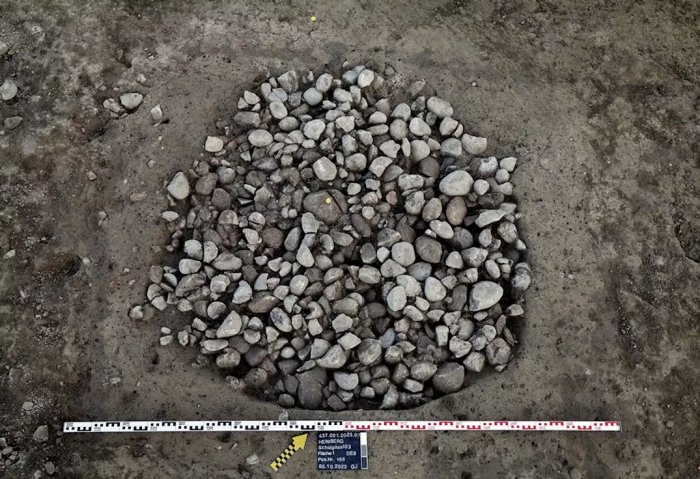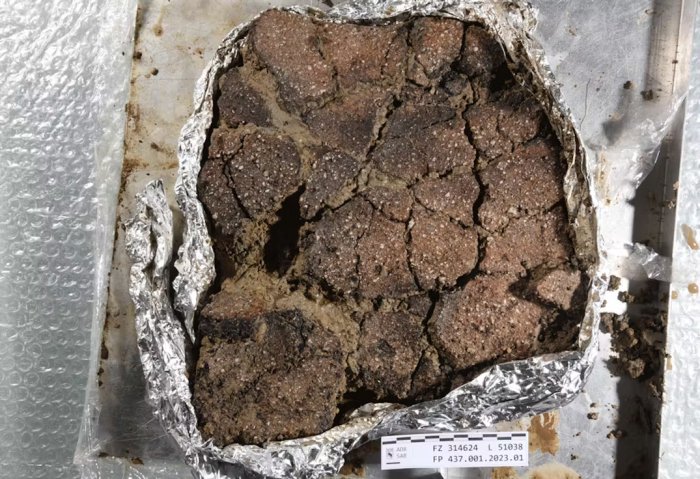Jan Bartek – AncientPages.com – Sometimes, when archaeologists look for one thing, they find something entirely different. This is exactly what happened in Switzerland when researchers were excavating, hoping to find an ancient Roman brick workshop, but they unearthed a previously unknown Bronze Age settlement instead.

The excavation in Heimberg, on the right edge of the area there is a pit filled with heat stones. © Archaeological Service of the Canton of Bern, Daniel Breu
Before starting a building project in Heimberg, the Archaeological Service of the Canton of Bern conducted a salvage excavation in fall 2023. Scientists report in a press release that the three-month-long exploration at Schulgässli in Heimberg revealed various settlement remnants across nearly 1000 square meters.
These included a layer heavily filled with heat stones, an abundance of Bronze Age ceramics, and several postholes and pits. Two pits were packed full of heat stones – rocks that had been fractured by intense heat.
The purpose of these pits filled with broken stones remains a mystery for now.
They might have served as thermal storage for cooking or heating pits, a common find from the Bronze Age era.

A pit filled with heat stones from the rescue excavation in Heimberg. © Archaeological Service of the Canton of Bern, Guy Jaquenod
It is possible that some pits were dug specifically for clay extraction. Back then, clay was a valuable resource, used in various ways, such as plastering the wicker walls of homes or creating pottery. This theory is supported by discovering a mᴀssive 35-meter-thick layer of hillside clay at the dig site.

Bronze Age ceramics recovered as a block from the rescue excavation in Heimberg. © Archaeological Service of the Canton of Bern, Frédérique Tissier
Interestingly, more recent extraction pits suggest that this same deposit was later mined by the renowned Heimberg potters in more contemporary times. Similar evidence from a brickworks site unearthed in Heimberg in 1964 indicates that this practice also occurred during the Roman era.
See also: More Archaeology News
The Heimberg location is among several recent Bronze Age discoveries between Thun and Bern. Since 2014, it has been known that remnants of pile dwellings have been conserved in the lower Lake Thun basin near Schadau Castle. Rescue excavations conducted in Thun-Schoren, Richigen and Kehrsatz/Chlywabere have revealed substantial evidence of Bronze Age settlements.
These new findings underscore the significance of the Aare Valley as both a dwelling place and a transportation route between the Alps (pᴀsses) and the Swiss plateau during the Bronze Age.
Written by Jan Bartek – AncientPages.com Staff Writer





